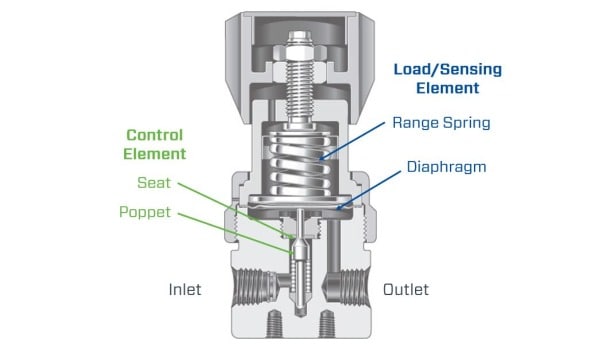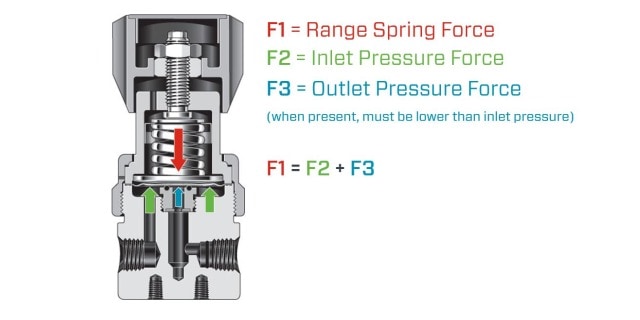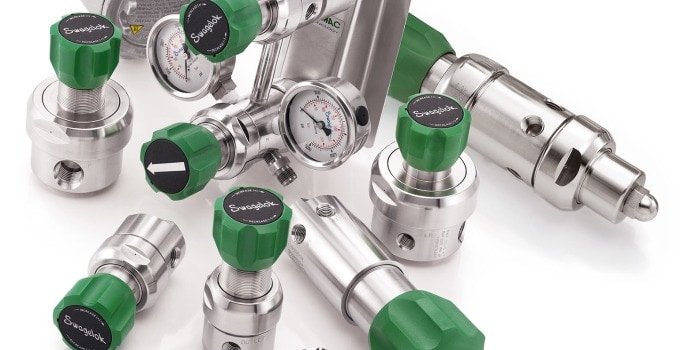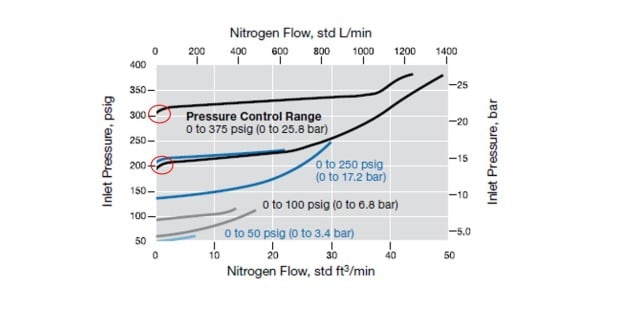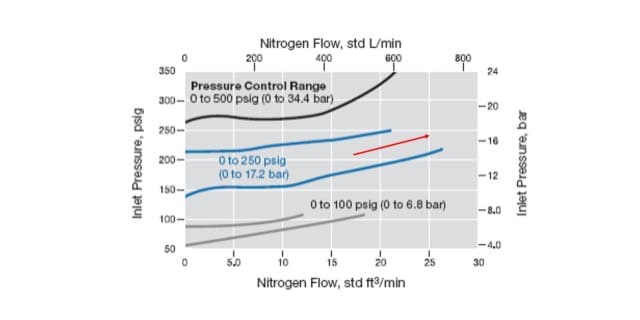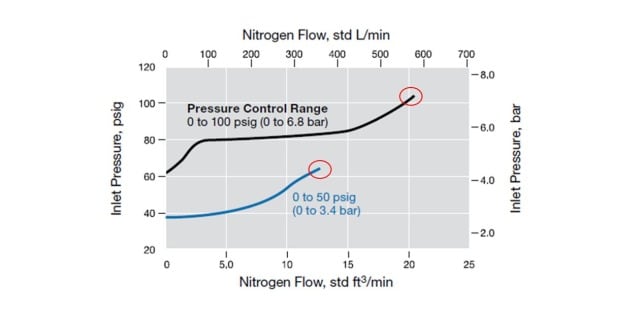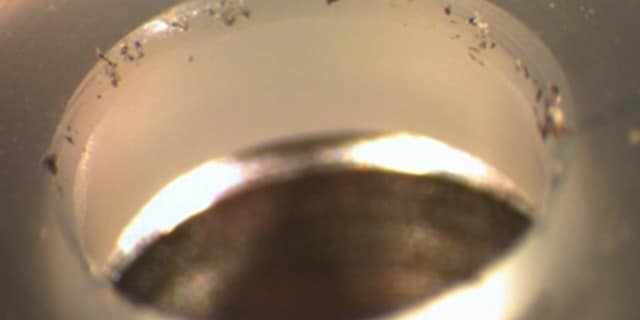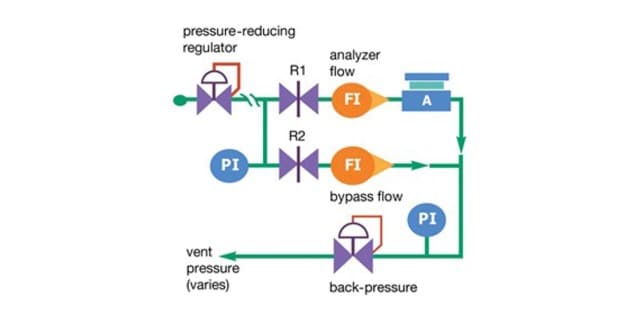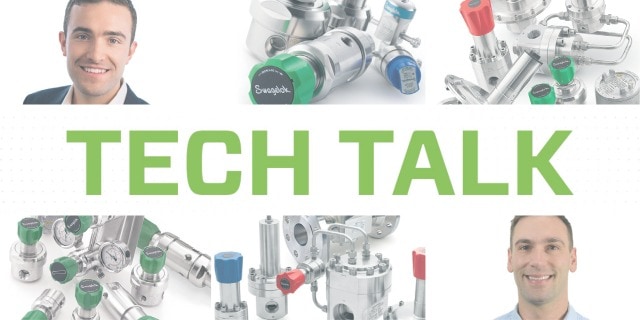Tech Talk: Back Pressure Regulators - What Are They Used For?
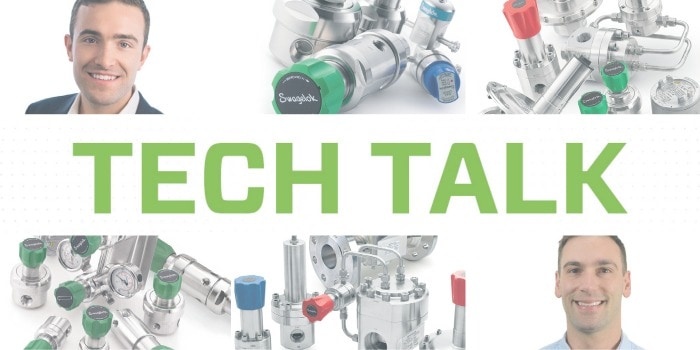
Back Pressure Regulators - What Are They Used For?
There's some misconception and general confusion about back-pressure regulators. Out in the field, our engineers receive all sorts of questions ranging from: What are they? What do they do? How do you use them? We aim to answer those questions and clear things up.
After reading this post, you should walk away with a better understanding of:
- What are back-pressure regulators?
- Back-pressure regulator theory.
- Back-pressure regulator performance criteria.
- The difference between back-pressure regulators and relief valves.
Webinar Recap: Back Pressure Regulators - What Are They Used For?
Matt and Adam breakdown the ins and outs of back-pressure regulators.
What Are Back-Pressure Regulators?Back-pressure regulators are utilized in many industrial facilities to maintain upstream pressure and protect sensitive equipment in fluid and sampling systems.
|
Back-Pressure Regulator Theory
As mentioned above, we can break regulators into two primary groups. Both of which operate under similar principles and utilize similar components.
Pressure-Reducing Regulators are pressure regulators that sense the outlet pressure and control the pressure to the process. They are in charge of the downstream pressure. Regulators that control pressure from the process by measuring the inlet pressure are known as back-pressure regulators. They have complete control over their upstream pressure.
As with a pressure-reducing regulator, we have two primary elements working in tandem within our device: A control element and load/sensing element. Both consist of four main components working in concert:
- The control element controls flow and pressure via the seat. Think of it as the valve within the regulator.
- The load and sensing element is made up of a range spring and diaphragm.
If the inlet pressure happens to be less than our set spring force, the spring will keep the seat closed restricting flow through the regulator. However, suppose our inlet pressure climbs above the set spring force. In that case, the inlet pressure will start to push against the diaphragm and range spring, eventually opening the seat and allowing the pressure through. A game of balance indeed.
The Operating Principle - Balance of Forces
Regulators operate under a balance of forces principle—both types of regulators work in slight variation of each other. Seeing as there is no poppet spring in a back-pressure regulator, the range spring or load force (F1) is equal to the inlet pressure (F2) + outlet pressure (F3).
In some cases, back-pressure regulators are tied to some sort of atmospheric vent. In that case, there is no outlet pressure force. We can consider the range spring or load force equal to the inlet pressure force. It's essential to keep this operating principle in mind when looking at regulator performance criteria.
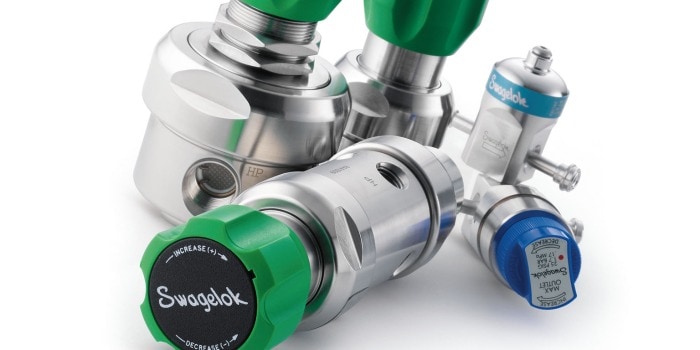
Pressure-Reducing Regulators
The right combination of pressure reducing regulators to fit practically any situation.
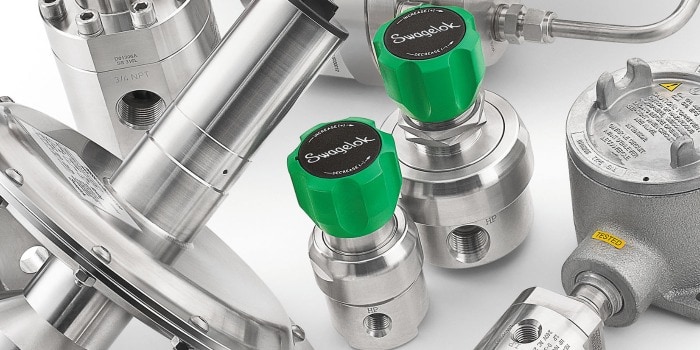
Back-Pressure Regulators
Back pressure regulators that provide reliable control for your fluid systems.
Back-Pressure Regulator Performance Criteria
What Is Lockup?
The difference in pressure between a flowing and non-flowing condition. As we close off the flow, we will see the control pressure or inlet pressure drop off. The decrease happens right after we close off and remove the pressure from the system.
In the example above, you'll notice the steep dropoff on the left side of the chart. This is from closing the flow. If the flow were open, you would see the reverse effect—a sharp increase in flow.
What Is Accumulation?
Pressure-reducing regulators exhibit droop. Back-pressure regulators exhibit a similar trait. As the flow from upstream increases, the set point pressure increases. Like droop, this effect is mostly caused by the load spring. This is know as accumulation.
In the example above, you can see as we increase flow, we're accumulating inlet pressure. This is something we want to control.
What Is Choked Flow?
When a regulator is in the fully open position, it is no longer regulating pressure. It acts as a restricting orifice. In other words, choked flow. Decreasing the actuating spring load will not drop the controlled pressure and will not increase flow.
What Is Creep (Or Bleed)?
Inlet pressure decreases over time. Eventually dropping below what we set it at. This phenomenon is often a result of a damaged seat, which is causing leakage across the regulator (see image below). If the seat does not fully close, pressure may continue to creep or bleed through the orifice.
You can prevent creep and/or bleed with proper filtration. Most back-pressure regulators that exhibit this criteria happen right at the beginning of their lifespan.
Back Pressure Regulator Vs. Relief Valves
Pressure relief valves (PRVs) should not be used to control system pressure. Relief valves relieve pressure, not control it. They should be designed for failure scenarios such as regulator diaphragm failure, pump overpressure, and plugged lines.
Due to the more prominent sensing element, back-pressure regulators are better equipped to control pressure. They're more sensitive to pressure changes and will allow you to keep upstream pressure exactly where you want it.
Below is a typical method for installing a back pressure regulator. Notice the pressure drop between the two regulators.
Back-Pressure Regulator Use Case Example:
In this example, we are feeding process fluid to an analyzer (blue and green box, labeled A). From the top-left, we're coming in with our inlet pressure. We have a pressure reducing regulator, followed by a needle valve, and a flow meter, an analyzer, and down at the bottom, we have our back-pressure regulator and a vent.
Between the pressure-reducing regulator and the back-pressure, we have the needle valve. It's acting as the pressure drop. Suppose we don't have that pressure drop, and the pressure-reducing regulator is tied directly to a back-pressure regulator. In that case, it's going to be impossible to set both of those regulators the same.
If the pressure-reducing regulator is trying to deliver a slightly different pressure than the back-pressure regulator, the two regulators will begin to "fight" each other for control.
Often both regulators end up in the wide-open position, pressure becomes unpredictable, and you'll lose control of the flow.
This is where the needle valve comes into play. Which allows for an appropriate pressure drop. In this case, the pressure-reducing regulator gets us close to where we want our process to be set. The back-pressure regulator can help prevent loss of flow control.
If you have questions as you are setting up back-pressure regulators in your fluid systems, we can help. Swagelok field engineers can visit your facilities to evaluate your system, advise on design, or troubleshoot issues.

